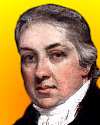
On 17 May 1749, Edward Jenner was born, the English surgeon who discovered the method of vaccination for smallpox.
His interest was initiated by hearing tales of milkmaids who had caught the cowpox being immune from smallpox. Thus, he began by investigating cowpox.
He self-published the results of his study as An Inquiry Into the Causes and Effects of...the Cow Pox (1798). By following the link, which is to an abridged version, you again have a chance to wonder, or be impressed, or feel a quiet excitement, as you read the actual words of one of medicine's great researchers.

On 17 May 1836, Sir Joseph Norman Locker was born. Today's book pick is: Science and Controversy: A Biography of Sir Norman Lockyer, Founder Editor of Nature (Macmillan Science), by A. Meadows. Lockyer was the founding editor of one the world’s leading scientific journals, which is his lasting memorial. But his life, and controversial theories, are an important part of science history. His ideas were at the forefront of public debate, and ranged from the brilliant to the perverse. This book is a fascinating insight into the eventful life of this eminent Victorian scientist. This biography constitutes an important, absorbing and eminently readable narrative of Lockyer’s role in transforming the practice and social organization of late Victorian science.
It is available from Amazon, typically about New from $3.18. Used from $3.18. (As of earlier time of writing - subject to change.)
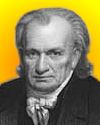 | Geology has its peculiar difficulties, from which all other sciences are exempt. Questions in chemistry may be settled in the laboratory by experiment. Mathematical and philosophical questions may be discussed, while the materials for discussion are ready furnished by our own intellectual reflections. Plants, animals and minerals, may be arranged in the museum, and all questions relating to their intrinsic principles may be discussed with facility. But the relative positions, the shades of difference, the peculiar complexions, whether continuous or in subordinate beds, are subjects of enquiry in settling the character of rocks, which can be judged of while they are in situ only. |
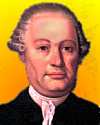 | I here present the reader with a new sign which I have discovered for detecting diseases of the chest. This consists in percussion of the human thorax, whereby, according to the character of the particular sounds then elicited, an opinion is formed of the internal state of that cavity. |
 | While the vaccine discovery was progressive, the joy I felt at the prospect before me of being the instrument destined to take away from the world one of its greatest calamities [smallpox], blended with the fond hope of enjoying independence and domestic peace and happiness, was often so excessive that, in pursuing my favourite subject among the meadows, I have sometimes found myself in a kind of reverie. |
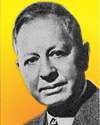 | Science cannot stop while ethics catches up ... and nobody should expect scientists to do all the thinking for the country. |
| Before you look at today's web page, see if you can answer some of these questions about the events that happened on this day. Some of the names are very familiar. Others will likely stump you. Tickle your curiosity with these questions, then check your answers on today's web page. | |
| Births | |
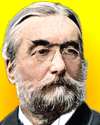 | Sir Joseph Norman Lockyer, born 17 May 1836, in 1868 discovered and named the element helium that he found in the Sun's atmosphere before it had been detected on Earth. He also applied the name chromosphere for the sun's outer layer. He discovered, together with P. J. Janssen, the prominences (red flames) that surround the solar disk. He was also interested in the classification of stellar spectra and developed the meteoric hypothesis of stellar evolution. He was the founding editor of a scientific journal that is still being published. What is the name of the journal of which he was the Founder Editor? |
 | Edward Jenner (1749-1823) was an English surgeon and discoverer of vaccination for smallpox. There was a common story among farmers that if a person contracted a relatively mild and harmless disease of cattle called cowpox, immunity to smallpox would result. On 14 May 1796 he removed the fluid of a cowpox from dairymaid Sarah Nelmes, and inoculated James Phipps, an eight-year-old boy, who soon came down with cowpox. Six weeks later, he inoculated the boy with smallpox. The boy remained healthy, proving the theory. He called his method vaccination. Jenner also introduced the word virus. Upon which Latin word did he base his name for vaccination? And why? |
| Deaths | |
 | George Evelyn Hutchinson (1903-1991) was an English-born American zoologist known as the "father of modern limnology" for his ecological studies. What do limnologists study? |
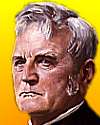 | John Deere (1804-1886) was a pioneer American inventor and manufacturer. What was this Deere’s field of invention? |
| Events | |
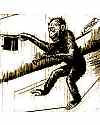 | On a certain 17 May, the Tennessee governor of signed a law to repeal of the 1925 state law prohibiting the teaching of evolution. The original law had made it unlawful for any public school teacher to teach any theory that denies the story of the Divine Creation of man as taught in the Bible, and to teach instead that man has descended from a lower order of animals. This law had been tested in the “Scopes monkey trial.” Scopes was found guilty, but later acquitted on a technicality. In which decade was this law repealed? |
 | On 17 May 1912, the London newspaper, The Times, reported that new experimental equipment was in place at Epsom, to be tested in the afternoon of the following day. This, the first of its kind in Great Britain, provided 320 Epsom people the ability to do for themselves something they had previously depended on another person to do for them. What was the purpose of the equipment? |
 | In 1955, the highly classified U.S. patent (No. 2,708,656) for the first atomic pile was finally issued, 11 years after it had been filed on 19 Dec 1944. Enrico Fermi and Leo Szilard were listed as co-inventors. The patent described the method by which a self-sustaining nuclear chain reaction had been accomplished. They achieved the world’s first controlled, self-sustaining nuclear chain reaction on 2 Dec 1942. Fermi died on 28 Nov 1954, six months before the patent was issued. Where was the atomic pile located for the experiments by Fermi and Szilard? |
Fast answers for the previous newsletter for May 16: they had superconductivity at temperatures higher than had previously been thought attainable • chromium and beryllium • (Jean-Baptiste-)Joseph Fourier • made from concrete • very large, cylindrical bombs rotating backwards at high speed, dropped at the right height and place, skipped along the surface of the water, right up to the base of the dam—like skipping stones on a pond • the decade including the year 1988.
 If you enjoy this newsletter, the website, or wish to offer encouragement or ideas, please send feedback by using your mail reader Reply button.
If you enjoy this newsletter, the website, or wish to offer encouragement or ideas, please send feedback by using your mail reader Reply button. Your click on a Facebook, StumbleUpon, or other social button on the site webpages is also a welcome sign of appreciation. Thank you for using them.
© This newsletter is copyright 2020 by todayinsci.com. Please respect the Webmaster's wishes and do not put copies online of the Newsletter — or any Today in Science History webpage. (If you already have done so, please remove them. Thank you.) Offline use in education is encouraged such as a printout on a bulletin board, or projected for classroom viewing. Online, descriptive links to our pages are welcomed, as these will provide a reader with the most recent revisions, additions and/or corrections of a webpage. For any other copyright questions, please contact the Webmaster by using your mail reader Reply button.
--
If you do not want to receive any more newsletters, Unsubscribe
To update your preferences and to unsubscribe visit this link
Executive Real Estate Business Class
-
"It was like a man with wings. It wasn't like anything you'd see on TV or in a monster movie." ...
About the publisher
Search This Blog
Blog Archive
-
▼
2021
(585)
-
▼
May
(62)
- Tonight: Back-to-Back Premieres
- On This Day for May 31 - Adolf Eichmann hanged, Cl...
- Newsletter for Monday 31 May.
- On This Day for May 30 - Joan of Arc burned at the...
- TONIGHT at 8/7c: The Tulsa Race Massacre Revealed
- Newsletter for Sunday 30 May.
- Bundle Up For The Summer!
- On This Day for May 29 - Mount Everest summit reac...
- Newsletter for Saturday 29 May.
- On This Day for May 28 - Amnesty International fou...
- Newsletter for Friday 28 May.
- On This Day for May 27 - Founding of St. Petersbur...
- Newsletter for Thursday 27 May.
- On This Day for May 26 - Martin Luther declared a ...
- Newsletter for Wednesday 26 May.
- On This Day for May 25 - U.S. Constitutional Conve...
- Newsletter for Tuesday 25 May.
- Behind Every Empire There’s a Titan
- On This Day for May 24 - Opening of the Brooklyn B...
- On This Day for May 23 - Tibet annexed by China, C...
- Newsletter for Sunday 23 May.
- The Tulsa Race Massacre, 100 Years Later
- On This Day for May 22 - Roman Emperor Constantine...
- Newsletter for Saturday 22 May.
- On This Day for May 21 - First nonstop solo transa...
- Newsletter for Friday 21 May.
- On This Day for May 20 - U.S. Homestead Act signed...
- Newsletter for Thursday 20 May.
- On This Day for May 19 - Ringling Bros. Circus for...
- Newsletter for Wednesday 19 May.
- Learning This Fun Doesn't Need A Summer Break
- On This Day for May 18 - Eruption of Mount St. Hel...
- Newsletter for Tuesday 18 May.
- On This Day for May 17 - School segregation outlaw...
- Newsletter for Monday 17 May.
- Follow the trail of 400 facts!
- On This Day for May 16 - Warsaw Ghetto Uprising su...
- Newsletter for Sunday 16 May.
- On This Day for May 15 - Edith Cresson appointed F...
- Newsletter for Saturday 15 May.
- On This Day for May 14 - Declaration of Israel's s...
- Newsletter for Friday 14 May.
- On This Day for May 13 - U.S. declaration of war o...
- Newsletter for Thursday 13 May.
- Ridiculous History You Want To Know About!
- On This Day for May 12 - First flight over the Nor...
- Newsletter for Wednesday 12 May.
- On This Day for May 11 - “New Rome” established by...
- Newsletter for Tuesday 11 May.
- On This Day for May 10 - Nelson Mandela inaugurate...
- Newsletter for Monday 10 May.
- On This Day for May 9 - Fourth and final voyage of...
- On This Day for May 7 - Theatre Royal opened, Pyot...
- On This Day for May 5 - Mexican victory in the Bat...
- On This Day for May 4 - Four students shot at Kent...
- On This Day for May 3 - Margaret Thatcher elected ...
- Newsletter for Monday 3 May.
- TONIGHT: The Bin Laden Raid, Revealed
- On This Day for May 2 - Lou Gehrig's 2,130-game st...
- Newsletter for Sunday 2 May.
- On This Day for May 1 - May Day founded, Arthur We...
- Newsletter for Saturday 1 May.
-
▼
May
(62)
-
Blogroll
-
About
HistoryFact










0 comments:
Post a Comment